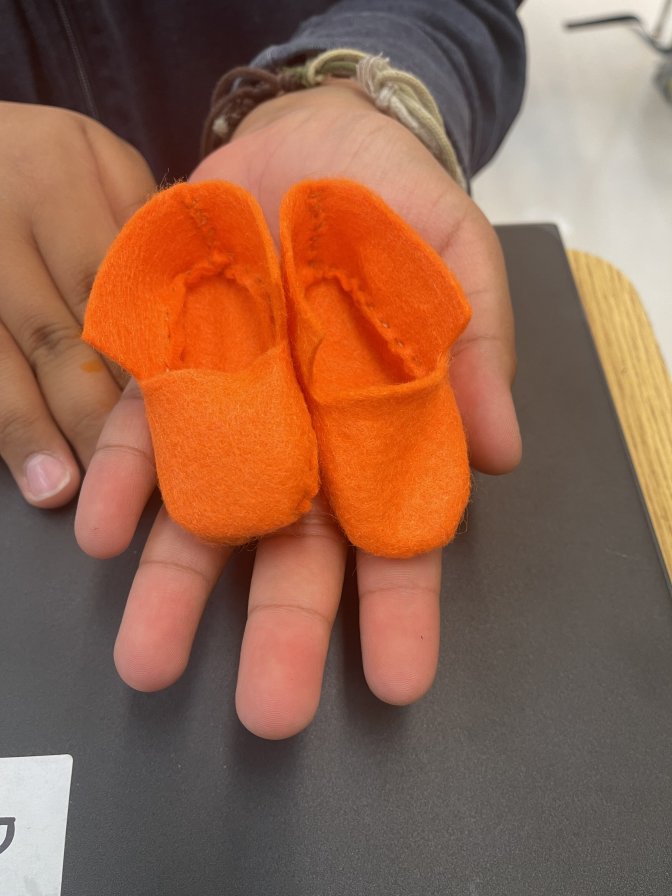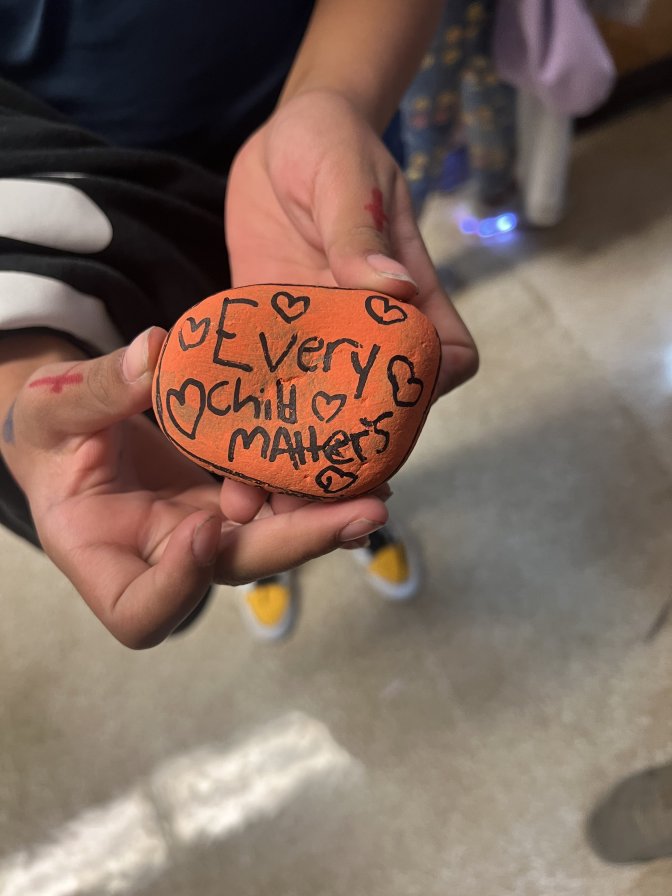Jacob Lane had never sewn before, but in the days leading up to Sept. 30 — the National Day of Truth and Reconciliation — the 13 year old was hand-stitching miniature orange moccasins.
The moccasins are a tribute to those who were in residential schools.
Read more:
Residential schools: What we know about their history and how many died
Lane, a Métis student in Grade 8 at Kitchener Community School in Regina, Sask., knows Indigenous students were torn from their families and sent away to church-run schools.
“I don’t really talk about it at home,” said Lane, “but me and my family know it was real bad.”
The teachings in his classroom go far beyond Orange Shirt Day.
Jessica Madiratta, an Indigenous advocate teacher at the school, said the majority of students attending are Indigenous — they are immersed in the history and culture year-round.
“With having Indigenous studies every day, it’s just something that’s just a part of their everyday classroom experience,” said Madiratta.
The discussions are age-appropriate, but Madiratta said the most important thing for all students to learn is truth.
“We need to teach the truth first, that’s the most important, before we even get to the stages of reconciliation, and education is the best place for this.
“We have the classroom spaces, teachers, the opportunities for kids to learn this while they’re young, so when they’re older, they’re going to have this in-depth knowledge of Indigenous people, Indigenous history — especially with the history of residential school.”
That history is not long ago.
The school itself isn’t far from Cowesses First Nation, where 751 unmarked graves were discovered near the former residential school site.
Read more:
Estimated 751 unmarked graves found at former Saskatchewan residential school
Some of today’s students from Cowesses First Nation attend Kitchener Community School.
“The discoveries that have been found in Cowessess have an impact on our school community,” said Madiratta.
“We have people in our community who are from Cowessess, so it’s really important as an educator that we are bringing this learning into the classroom and so it’s not forgotten.
“It’s something that was never part of the curriculum before, so it’s essential it’s a part of curriculum now.”
Etienna Moostoos-Lafferty, and Indigenous education coach, has also been sharing that same message in schools and on social media.
Moostoos-Lafferty, from Edmonton, Alta., has been working with an Evergreen Catholic School to develop resources for teachers.
She calls it “10 Days of Truth THEN Reconciliation.”
I am very excited to share this resource with teachers and leaders of @EvergreenCSSD Ten Days of Truth THEN Reconciliation, is a K-12 resource designed like a calendar, giving one idea, activity, video, or resource a day for each day leading up to September 30th. pic.twitter.com/Wvf1bXubyX
— Etienna Moostoos-Lafferty (@EtiennaLafferty) September 17, 2021
“I really wanted to make sure it wasn’t just ‘truth and reconciliation,’” said Moostoos-Lafferty. “We sometimes just throw that term around so loosely and to many Indigenous people, myself included, my grandma was a survivor of residential school.”
Moostoos-Lafferty said she is honoured and “blown away” that educators across the country have been sharing her resource.
“I love seeing orange shirts but more than anything, I love seeing progress. We can’t do that just in one day.”
Her guide suggested age-appropriate discussions and activities leading up to Sept. 30.
For Grades 4-8, it included writing a message to Lillian Elias, an Inuvialuit residential school survivor.
She shared letters from students in Spruce Grove, Alta., who wrote to her about her bravery.
On day 3 of Truth THEN Reconciliation, Mrs. Murphy class of @EvergreenCSSD wrote letters to Lillian Elias, a survivor of Residential Schools. These are so heart warming and genuine. Today is day 4, what is everyone else working on? pic.twitter.com/P6Akn2Rmr9
— Etienna Moostoos-Lafferty (@EtiennaLafferty) September 23, 2021
“It wasn’t to apologize or feel bad or feel guilt,” said Moostoos-Lafferty, “it was just to respond, talk about how that made you feel, talk about how her story made you feel.”
It’s a heavy topic, one Moostoos-Lafferty said some teachers and parents are nervous to approach.
She often hears: “I don’t want to traumatize them. I don’t want them to be worried.”
Read more:
1st National Day for Truth and Reconciliation draws mixed feelings from Indigenous community
But there are ways to go about it gently, said Moostoos-Lafferty and Madiratta.
They both recommend reading books about residential schools to children.
“I hope to see some of that progress next year,” said Moostoos-Lafferty, along with more conversations at home with parents and children.
“It’s important for them to know that us as adults are working to be better.
“Reconciliation will take a very long time because there’s a lot of healing to do. There’s a lot of grieving.”
That healing and grieving takes time and reflection.
As Lane sat in silence, sewing moccasins with a traditional whip stitch, the teenager reflected on what reconciliation means to him.
“It’s not just one way of knowing it.”



